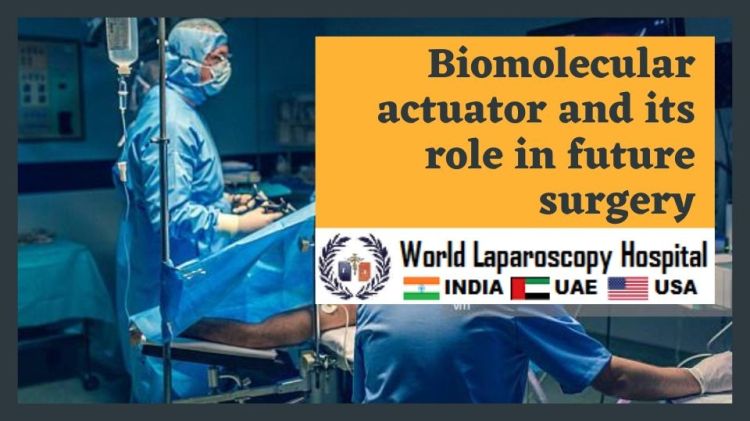Biomolecular actuators are a type of nanotechnology that can convert chemical energy into mechanical work, enabling them to act as tiny motors. In the field of medicine, biomolecular actuators hold great promise for revolutionizing minimally invasive surgery. In this essay, we will explore the concept of biomolecular actuators, their potential applications in minimally invasive surgery, and the impact they may have on the field of medicine.
What are Biomolecular Actuators?
Biomolecular actuators are tiny machines that can convert chemical energy into mechanical work. These machines are made up of biological molecules, such as proteins and DNA, and are capable of performing a wide range of functions, including movement, sensing, and signal transduction.
The most commonly used biomolecular actuators are proteins, which are capable of contracting and expanding in response to chemical signals. These proteins can be engineered to respond to specific chemical stimuli, making them ideal for use in medical applications.
Applications of Biomolecular Actuators in Minimally Invasive Surgery:
- Drug Delivery:
One of the potential applications of biomolecular actuators in minimally invasive surgery is drug delivery. Biomolecular actuators can be engineered to release drugs in response to specific chemical signals, enabling targeted drug delivery to specific parts of the body.
- Tissue Engineering:
Another potential application of biomolecular actuators in minimally invasive surgery is tissue engineering. Biomolecular actuators can be used to create artificial tissues that can contract and expand in response to chemical signals, enabling them to mimic the functions of natural tissues.
- Microrobotics:
Biomolecular actuators can also be used in microrobotics, which is the development of tiny robots that can perform surgical procedures. These robots can be controlled using chemical signals, enabling them to move and perform surgical procedures with greater precision and accuracy.
- Diagnostic Tools:
Biomolecular actuators can also be used as diagnostic tools. They can be engineered to respond to specific chemical signals, enabling them to detect the presence of disease or infection in the body.
Impact of Biomolecular Actuators on Minimally Invasive Surgery:
- Increased Precision and Accuracy:
Biomolecular actuators have the potential to increase the precision and accuracy of minimally invasive surgery. These tiny machines can be controlled using chemical signals, enabling them to move and perform surgical procedures with greater precision and accuracy than traditional surgical tools.
- Reduced Risk of Complications:
Biomolecular actuators may also reduce the risk of complications associated with minimally invasive surgery. Because these machines can be controlled using chemical signals, they can be more precisely targeted to specific areas of the body, reducing the risk of damage to surrounding tissues.
- Faster Recovery Times:
Biomolecular actuators may also lead to faster recovery times compared to traditional surgical tools. Because biomolecular actuators can be more precisely targeted to specific areas of the body, they may cause less damage to surrounding tissues, resulting in faster healing times.
Challenges and Limitations of Biomolecular Actuators:
While there are numerous advantages to biomolecular actuators, there are also challenges and limitations to their use. One of the main challenges is the development of effective control systems for these tiny machines. Because biomolecular actuators are so small, it can be difficult to control their movement and function.
Another challenge is the development of effective delivery systems for these machines. Because biomolecular actuators are so small, they may need to be delivered to specific areas of the body using specialized delivery systems.
Finally, there is a need for continued research to evaluate the long-term safety and effectiveness of biomolecular actuators. While early studies have shown promising results, more research is needed to determine the long-term benefits and risks of these machines.
Conclusion:
Biomolecular actuators are a promising technology with a wide range of potential applications in medicine, including in minimally invasive surgery. These tiny machines have the potential to increase precision and accuracy, reduce the risk of complications, and lead to faster recovery times compared to traditional surgical tools. However, there are also challenges and limitations to the use of biomolecular actuators, including the development of effective control systems and delivery systems, and the need for continued research to evaluate their long-term safety and effectiveness.
Despite these challenges, the development of biomolecular actuators holds great promise for the future of minimally invasive surgery. As technology continues to advance, we can expect to see even more innovative and effective applications of biomolecular actuators in medicine. Ultimately, the use of biomolecular actuators has the potential to revolutionize the field of minimally invasive surgery, leading to improved patient outcomes and a better quality of life for individuals around the world.






